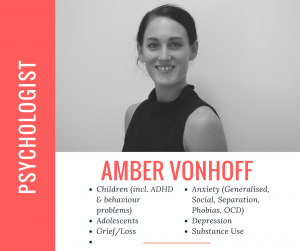Understanding Panic Attacks
[images style=”0″ image=”https%3A%2F%2Fwww.mppsych.com.au%2Fwp-content%2Fuploads%2F2018%2F06%2FUnderstanding-panic-attacks-blog-1.png” width=”560″ align=”center” top_margin=”0″ full_width=”Y”]
[headline style=”4″ font_color=”%23e06666″ font_spacing=”0″ align=”center” headline_tag=”h2″]What Is A Panic Attack?
[/headline]
A panic attack is a distinct episode of high anxiety, with intense fear or discomfort. It develops abruptly and has its peak within 10 minutes. A person who is having a panic attack will experience a sudden onset of several physical sensations. See the list below for common symptoms of a panic attack.
To understand how and why a person experiences a panic attack, it is important to understand the brain’s mechanism for responding to fear. Fear is a common, and very useful response that humans have to danger and harm. The fear response is automatic, and very fast! This response is useful when we are in a life threatening situation (imagine a grizzly bear approaching you), allowing us to protect ourselves using either a “fight”, “flight” or “freeze” response. The physical sensations that we experience during panic are the result of the brain preparing the body for the appropriate reaction to danger. However, it is possible for a person to experience a “false alarm”, whereby this same fear response is triggered and panic occurs even when we’re not in a life threatening situation. This can happen when a person least expects.
Experiencing a panic attack when there is no real danger can be extremely distressing and can lead to a fear of experiencing additional panic attacks. This is often accompanied by fearful thoughts and avoidant behaviours, which begin to maintain a vicious cycle of fear and ongoing panic attacks.
Several of the following symptoms are present during a panic attack. A panic attack is classified by at least four of the following symptoms occurring together:
➡ Palpitations, pounding heart, or rapid heart rate
➡ Sweating
➡ Trembling and shaking
➡ Shortness of breath, sensations of choking or smothering
➡ Chest pain or discomfort
➡ Abdominal distress or nausea
➡ Dizziness, lightheadedness, feeling faint or unsteady
➡ Feelings of unreality (derealisation), or being detached from oneself
➡ Fears of losing control or going crazy
➡ Fear of dying
➡ Numbness or tingling
➡ Chills or hot flushes
(Adapted from DSM-V, APA 2013)
[headline style=”4″ font_color=”%23e06666″ align=”center” headline_tag=”h2″]What Does Psychological Intervention Involve?
[/headline]
It is important that you first see your GP, to make sure medical causes for panic symptoms have been examined and ruled-out. Such medical illness include: hyperthyroidism, caffeine addiction, mitral valve prolapse, postural tachycardia syndrome (PoTS), or other causes.
A psychologist aims to work with you to understand your individual experience of panic. This will include assessing symptoms and establishing the factors that may be triggering and maintaining your panic attacks.
Following this, the psychologist will work with you to better understand fear and anxiety, what parts of the brain are involved, and skills you can use to reduce panic attacks. Think of this as the part where you can finally “make sense” of it all, especially when it feels overwhelming!
Cognitive-Behavioural Therapy is an evidence-based treatment that is effective for overcoming panic. It involves techniques that aim to help the mind understand that panic sensations do not need to be feared, and therefore the overwhelming feeling of them reduces.
[headline style=”4″ font_color=”%23e06666″ align=”center” headline_tag=”h2″]5 Steps To Reduce Panic
[/headline]
(Panic First-Aid, Rossouw 2014)
[step_graphics style=”1″ color=”#e06666″][step style=”1″ text=”1″ headline=””]%3Cp%3EStabilise%20yourself%20by%20sitting%20or%20laying%20down.%3C%2Fp%3E%0A[/step][step style=”1″ text=”2″ headline=””]%3Cp%3EFocus%20on%20your%20out-breath.%20Breathe%20out%20as%20anxiety%20typically%20makes%20the%20body%20inhale%20too%20much%20and%20too%20quickly.%3C%2Fp%3E%0A[/step][step style=”1″ text=”3″ headline=””]%3Cp%3EBegin%20to%20slowly%20control%20your%20breathing%20into%20a%20comfortable%2C%20slower%20rhythm.%20See%20if%20you%20can%20notice%20your%20stomach%20gently%20rising%20and%20falling.%3C%2Fp%3E%0A[/step][step style=”1″ text=”4″ headline=””]%3Cp%3EIf%20possible%2C%20have%20some%20small%20sips%20of%20water%20and%20remember%20that%20panic%20will%20go%20away%20and%20won%E2%80%99t%20last%20forever.%3C%2Fp%3E%0A[/step][step style=”1″ text=”5″ headline=””]%3Cp%3EWait%205-10%20minutes%2C%20and%20continue%20to%20focus%20on%20your%20breath.%20The%20body%20has%20the%20capacity%20to%20naturally%20regulate%20stress%20responsible%20for%20panic.%3C%2Fp%3E%0A[/step][/step_graphics]
In addition to the above steps, try and use accurate and specific coping statements. E.g, “Anxiety will pass”, “I cannot faint from panic”, “I’ve dealt with this before, I will get through it again”.
If you continue to experience panic attacks, a psychologist can assist. We encourage you to consider the impact and distress that panic may be having on your life, or the life of someone close to you. The team at Mind Potential Psychology are here to answer any questions and/or guide you through the process to a panic-free life.
[button_1 text=”Download%20Article” text_size=”32″ text_color=”#ffffff” text_bold=”Y” text_letter_spacing=”0″ subtext_panel=”N” text_shadow_panel=”N” styling_width=”40″ styling_height=”30″ styling_border_color=”#ffffff” styling_border_size=”1″ styling_border_radius=”6″ styling_border_opacity=”100″ styling_gradient=”Y” styling_shine=”Y” styling_gradient_start_color=”#e06666″ styling_gradient_end_color=”#e06666″ drop_shadow_panel=”N” inset_shadow_panel=”N” align=”center” href=”https://www.mppsych.com.au/wp-content/uploads/2018/06/Understanding-Panic-Attacks.pdf” new_window=”Y”/]
[video_player type=”youtube” style=”1″ dimensions=”560×315″ width=”560″ height=”315″ align=”center” margin_top=”0″ margin_bottom=”20″ ipad_color=”black”]aHR0cHM6Ly95b3V0dS5iZS8tbzhsM1l3bUhubw==[/video_player]
[headline style=”4″ font_color=”%23e06666″ align=”center” headline_tag=”h2″]About The Author
[/headline]
Amber is invested in seeing her clients thrive. She has clinical experience providing evidence-based psychological treatment and has an interest in anxiety and mood-related conditions. Amber also works with children, adolescents and their families, and values the importance of supporting young people to be their best selves.
[headline style=”4″ font_color=”%23e06666″ align=”center” headline_tag=”h2″]References
[/headline]
- American Psychiatric Association. (2013). Diagnostic and statistical manual of mental disorders (5th ed.)
- Rossouw, P. J. (Ed.). (2014). Neuropsychotherapy: Theoretical underpinnings and clinical applications. Mediros Pty Limited.
- Salkovskis, P. M., Clark, D. M., Hackmann, A., Wells, A., & Gelder, M. G. (1999). An experimental investigation of the role of safety-seeking behaviours in the maintenance of panic disorder with agoraphobia. Behaviour research and therapy, 37(6), 559-574.

